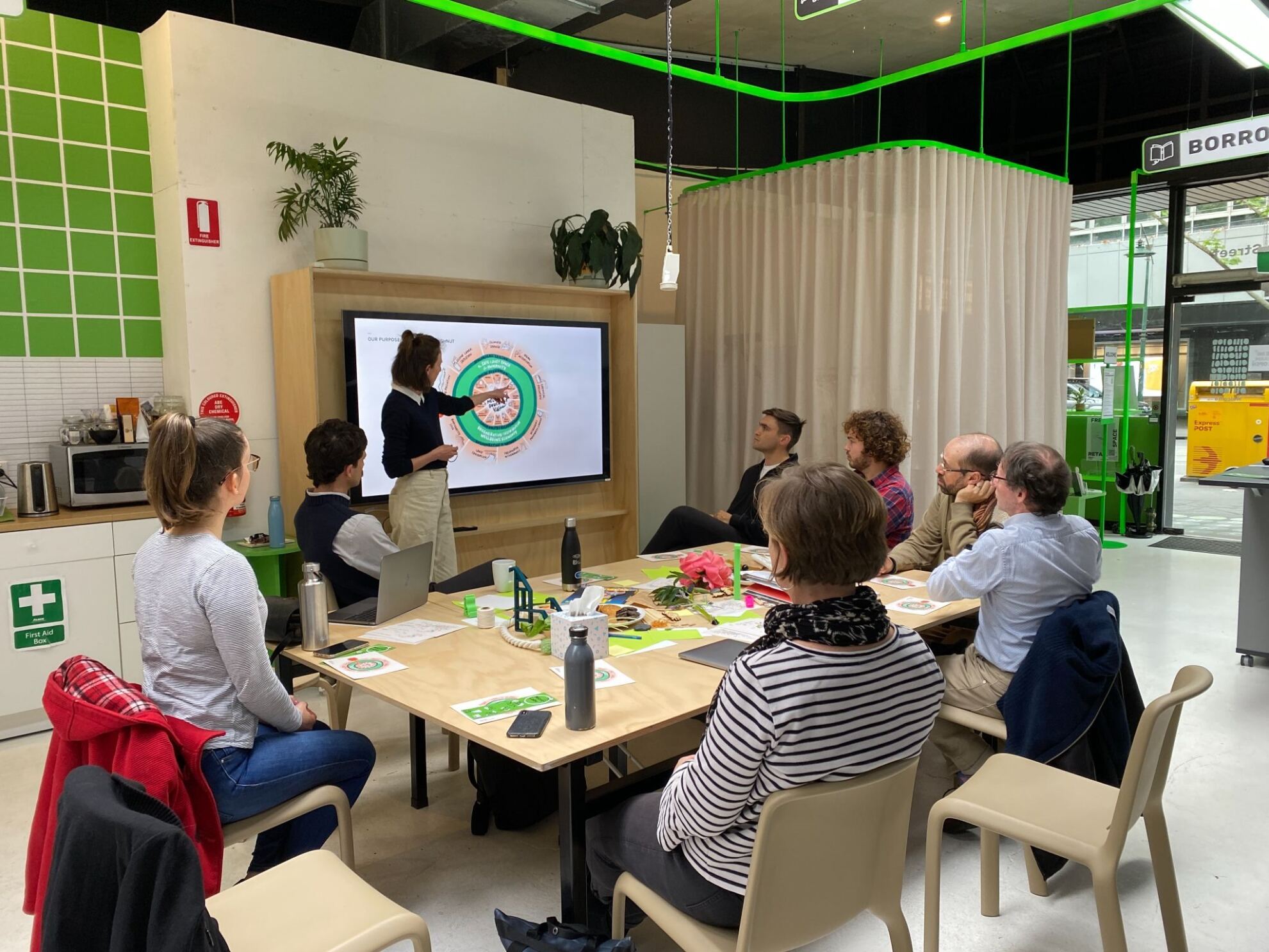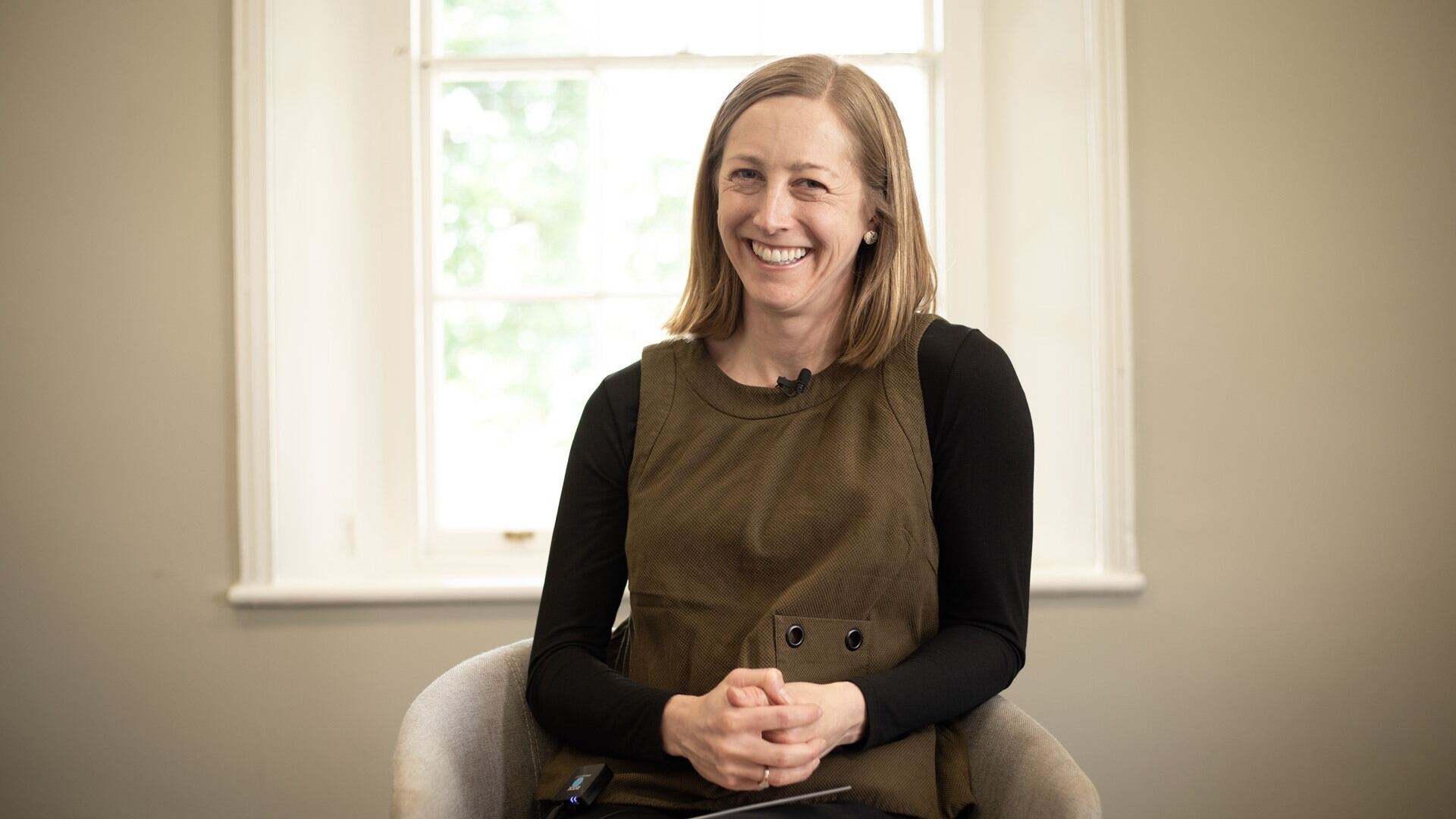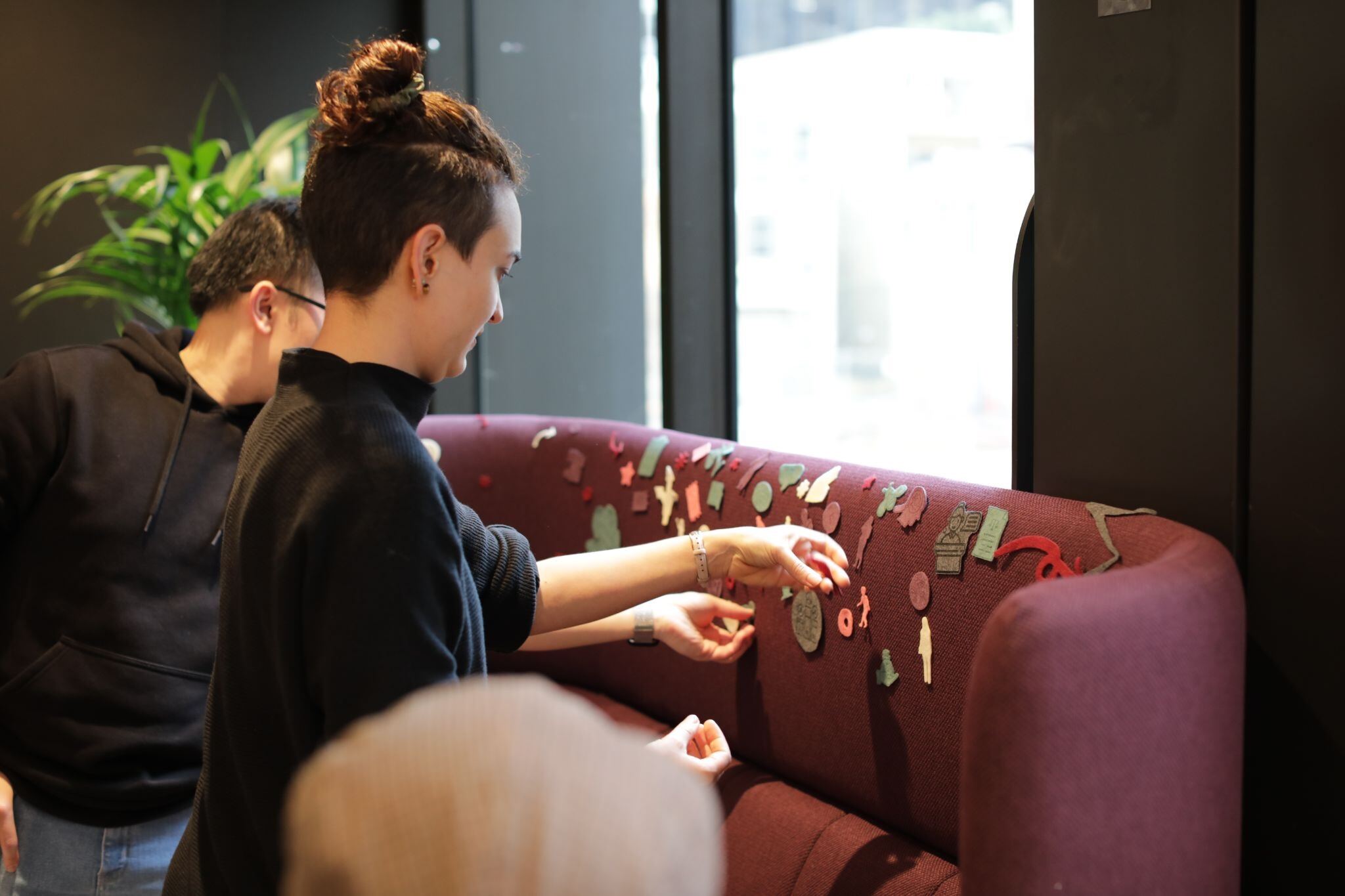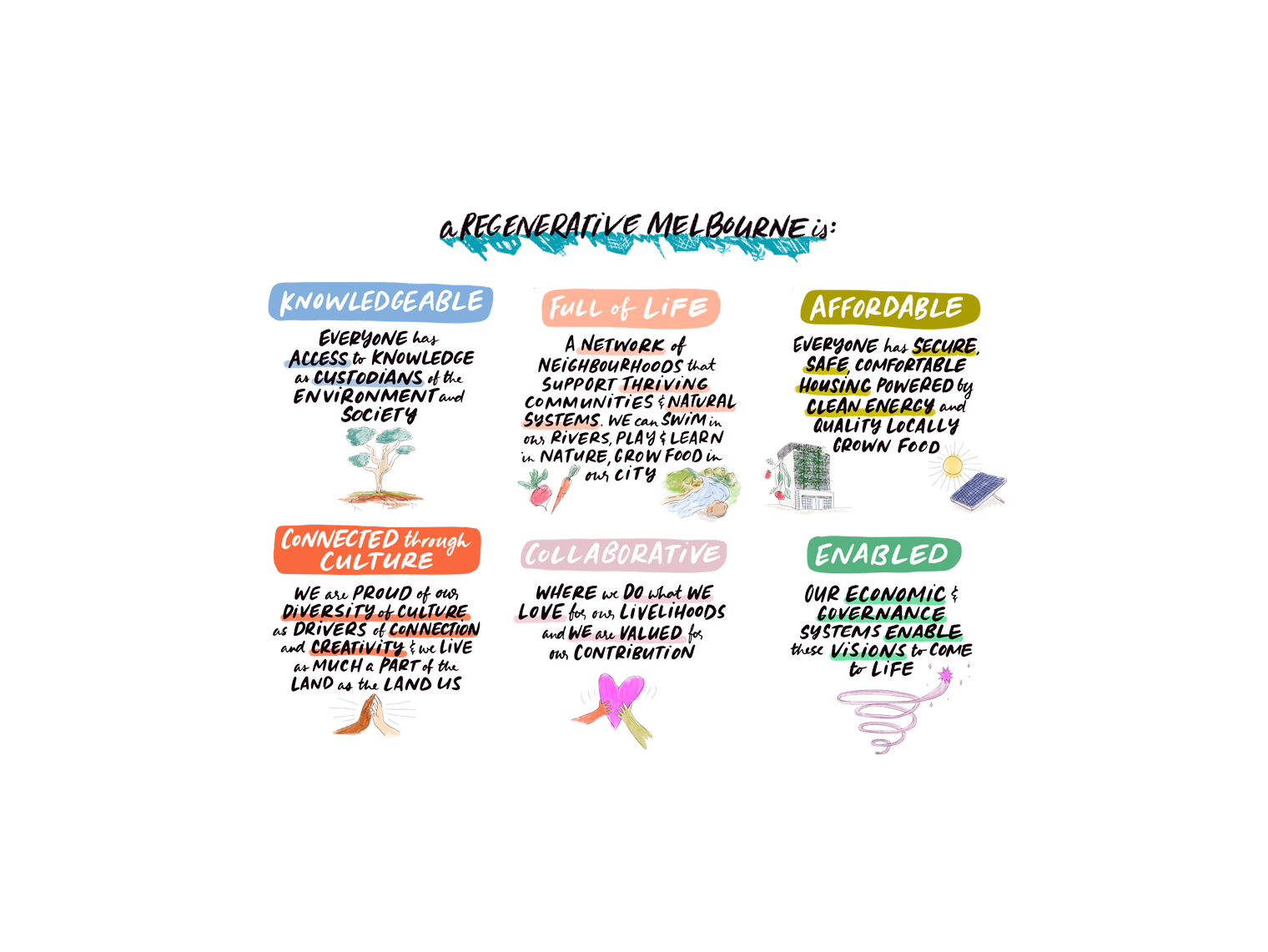Meet Regen Melbourne, our collaborators for the upcoming ‘Measuring What Matters: Co-creating a City Portrait’ Exhibition and Workshops taking place at RMIT PlaceLab Melbourne as part of RMIT’s ‘Wild Hope: Conversations for a Planetary Commons’.
We spoke with their Research Lead Alison Whitten to find out more about Regen Melbourne’s efforts into reimagining and remaking Melbourne together, and what this means for our collaboration.

Reimagining the future at Regen Melbourne. Photo: Regen Melbourne.
“When I think of what the city can actually look like in the future, I see a lot of green, a lot more integration of natural and urban elements. I see the amazing diversity of the city foregrounded in its identity. And I see joy, made possible by a sense that communities and bigger institutions are looking out for everyone, no matter what lies ahead of us.”

Alison Whitten. Photo: Regen Melbourne.
Tell us about Regen Melbourne and what you do.
Regen Melbourne is a platform for collaboration in support of a thriving future for our city. We shape and host ambitious projects that enable wellbeing of people and planet, all grounded in what makes Melbourne special.
My role is to lead the research side of our work. We want to ensure that our projects are drawing on the deep knowledge that exists in Melbourne in many forms, and that we aren’t reinventing the wheel in anything that we do. In addition, much of our work is about testing big challenges in new ways, so there is a lot that we need to learn through new research to strengthen the outcomes of our projects and the collaborations that underpin them and make them possible.
What is the project you are currently collaborating on with RMIT PlaceLab and what do you hope to achieve with it?
Our biggest research project at the moment is the development of a City Portrait for Greater Melbourne. We have been developing this in close collaboration with Dr Michael Dunbar at RMIT’s School of Design, and we’re excited to have the prototype on display at PlaceLab as part of the Wild Hope exhibition. We are taking a participatory, design-led approach to creating the City Portrait, which syncs up beautifully with PlaceLab’s activations. It’s been great to form a partnership on this project — hopefully the first of many!
Sum up in 20-25 words what the City Portrait is.
The City Portrait is a snapshot of Greater Melbourne’s social and ecological performance: how well are we meeting people’s needs within our environmental limits? It applies local data to the Doughnut Economics framework.
How can the community contribute to developing the City Portrait? (eg Coming to visit the installation)
What we’re asking through this installation is, what do you think? We are looking for community members to reflect on what the data is telling us; how else we could be measuring each part of the City Portrait and what stories are important to tell alongside the numbers. And, how easy is it to navigate the City Portrait in its current form?
The exhibition will be open 12pm – 4pm, Monday to Friday from 21 August – 29 September.
We are also holding three workshops on different themes related to the City Portrait — details are on the Wild Hope website:
Healing and Reconnecting to Country and Each Other — Wednesday, 23 August, 4pm – 6pm, PlaceLab Melbourne
Drawing our City’s System — Wednesday, 30 August, 4pm – 6pm, PlaceLab Melbourne
Painting a Portrait of Wild Hope — Wednesday 13 September, 4pm – 6pm, Design Hub Gallery

Participatory approaches to tackling integrated challenges. Photo: Regen Melbourne.
How could a ‘Regenerative Melbourne’ look like in 2050?
That’s the big question, right? Our vision for a regenerative Melbourne says that the city is knowledgeable, full of life, affordable, connected through culture, collaborative and enabled by supportive institutions and systems. But these things can take many forms and can look different for different people.
When I think of what the city can actually look like in the future, I see a lot of green, a lot more integration of natural and urban elements. I see the amazing diversity of the city foregrounded in its identity. And I see joy, made possible by a sense that communities and bigger institutions are looking out for everyone, no matter what lies ahead of us.
And, I taste great food, produced in ways that centre care for people and stewardship of land. After all, this wouldn’t be Melbourne without great food.

Regen Melbourne’s vision for the city. Image: Regen Melbourne.
How do you think we, as a community, can get there?
First, I think we need to believe that it’s possible.
And then, we need to think about what it looks like in our own lives, in our work and in how we influence decision-making at bigger scales.
At Regen Melbourne, we’re focused on projects, like making the Birrarung River swimmable, that can demonstrate the change we want to see. In this case, swimming is the hook that requires us to improve the health of the river ecosystem and rethink our relationship to this critical waterway.
I don’t think that change will happen overnight, and sometimes I feel impatient and anxious about that. But I also don’t think we’ll wake up one day and say, “great, our city is now thriving, and the work is done!” It’s a continuous journey, and the relationships we build along the way are incredibly important to it. I think we as a community are at our best when we fully recognise that.